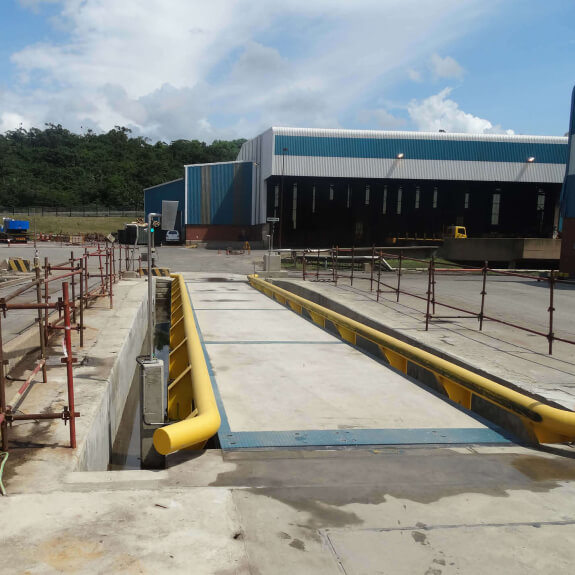
Weighbridges are pivotal instruments in the world of commercial and industrial weighing. They play an essential role in ensuring that goods transported by road, rail, or other methods are accurately weighed. By so doing, they facilitate smooth trade operations and enhance safety standards. When it comes to constructing a weighbridge, the materials used in its design are paramount to its longevity and efficiency.
Ensuring the right materials are used in weighbridge construction is crucial not only for durability but also for the accuracy and precision of the measurements. After all, these structures bear the weight of colossal vehicles and their cargo, so they must be robust and resistant to wear and tear.
South Africa, with its bustling trade hubs and extensive transport networks, demands the highest standards in weighing systems. Consequently, manufacturers invest in top-grade materials to guarantee the reliability and long life of their weighbridges. Let’s delve deeper into the materials commonly used in the construction of these vital structures.
Steel
One of the primary materials employed in weighbridge construction is steel. Its inherent strength and resilience make it ideal for withstanding the immense weights that weighbridges routinely encounter. High-tensile steel, in particular, is favoured due to its enhanced strength-to-weight ratio, ensuring the weighbridge can handle heavy loads without buckling or deforming.
In addition to its robustness, steel is also valued for its flexibility. It can easily be moulded into various shapes and sizes, suiting different weighbridge designs and specifications. The versatility of steel means that manufacturers can create customised solutions tailored to specific operational needs. Moreover, steel is resistant to many environmental factors, making it a staple in the harsh environments where weighbridges often find themselves.
To combat the corrosive effects of the elements, particularly in coastal regions, the steel used in weighbridges often undergoes galvanisation. This process involves coating the steel with a protective layer of zinc, providing added resistance against rust and corrosion. With this added protection, the lifespan of the weighbridge is substantially increased, offering a better return on investment for businesses.
Concrete
Concrete is another vital material commonly incorporated into weighbridge designs. This material’s rugged nature and ability to distribute loads effectively make it a preferred choice, especially for the foundation and platform of many weighbridges. Concrete ensures the weighbridge remains stable, even under the duress of heavy cargo.
Moreover, concrete weighbridges offer a certain level of flexibility. They can be designed for above-ground or pit-mounted installations, catering to specific site requirements or constraints. This versatility ensures that whether a site has ample space or is a bit more restricted, a suitable weighbridge solution can be devised.
When it comes to maintenance, concrete structures tend to demand less frequent attention compared to their steel counterparts. Given that they are inherently resistant to rust and corrosion, their longevity in the demanding industrial landscape becomes a notable advantage. While initial installation might be more time-intensive and costly, the reduced maintenance needs often offset these initial investments in the long run.
Electronics and Sensing Components
No weighbridge is complete without its array of electronic components. These include load cells, which are the heart of the weighing process. Typically made from stainless steel or aluminium, these cells transform the physical weight force into electrical signals, which are then interpreted and displayed as weight readings. Their construction materials are crucial in ensuring accurate and consistent measurements.
Junction boxes, another integral electronic component, are commonly made of durable, weather-resistant materials. They house the connections between the load cells and the display units, ensuring signals are transmitted seamlessly. These boxes play a pivotal role in safeguarding the electronics from environmental hazards, ensuring the weighbridge’s readings remain accurate over time.
Lastly, the display units, which relay the weight information to the operator, are crafted from robust materials to withstand the rigours of industrial environments. Their encasings are often designed to resist moisture, dust, and other contaminants, ensuring clarity of readings and longevity of the unit. After all, precision is paramount, and every component plays its role in delivering it.


